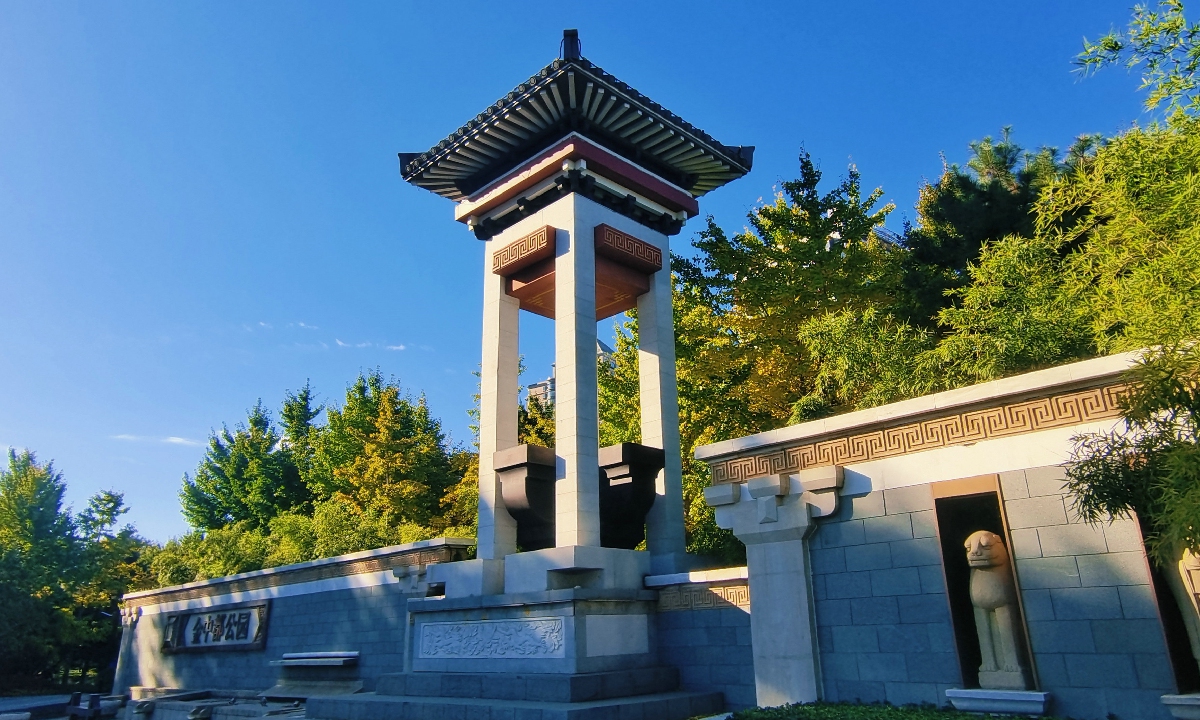
Jinzhong Capital City Ruins Park Photo: VCG
With 75,000 square meters open to the public, the Jinzhongdu, or Jinzhong Capital City Ruins Park, a "panoramic museum showing the beginning of Beijing's founding as a capital," is taking shape.
Covering a total of 150,000 square meters, the park has opened half of its space to visitors so far. It has also integrated itself into the Lize Financial Business District.
Shi Ben, director of the Fengtai District Forestry and Parks Bureau, said that by the end of 2024, the park aims to open about 100,000 square meters of space to visitors. The park will also establish an area focusing on archaeology with the aim of becoming a new landscape and open-air museum in Beijing.
Laid out from northwest to southeast, the park forms an L-shaped park about 60 meters wide and 2,300 meters long. The strip site is divided into three parts: a heritage ruins protection zone focusing on history, a business and leisure zone aimed at urban life and a natural ecological zone.
From north to south, the park consists of five sections: river, gate, city, square and art. Through these sections, which include topics such as the city's river system, the continuation of the Central Plains culture and garden landscapes, the park seeks to showcase and interpret the history and culture of the Jin (1115-1234), a Jurchen-led dynasty that fought with the Song Dynasty (960-1279).
On both sides of the park, there are tall maple, linden, eucalyptus, and ginkgo trees, in between which visitors can stroll along an open area. The side that is closer to the building is equipped with leisure facilities and furniture, so after a walk, visitors can take a break in this area, which also functions as an "outdoor living room" for the Lize Financial Business District.
The Jinzhong Capital Ruins were the starting point for Beijing's founding as a capital city. It is evidence of Beijing's history of nearly 870 years as a capital.
The heritage site has accompanied generations of people growing up. A resident surnamed Zhai said that when she was a girl, "I used to climb up and down on the city wall ruins. This place used to be our paradise."
Zhai's family has been living nearby for generations. Now she walks with her 2-year-old granddaughter through the park. The place has become host to the city's urban heritage.
There are four existing sites and relics related to the park in Beijing, three of which are located in Fengtai: Shuiguan Site of Jinzhongdu, the Ruins of Jinzhong Capital City and the Lotus Pond.
Jinzhong Capital City was expanded based on Nanjing, or South Capital, which was the name for Beijing during the Liao Dynasty (916-1125). The Fengtai district was part of this area that was expanded upon during Jin's rule.
With authentic relics from the Jin, the park is of great significance for studying the layout of the streets and lanes during the time, said Ding Lina, a research fellow with the Beijing Institute of Archaeology.
The Fengtai district is the most likely area for discovering the city gate during the Jin. In the future, more archaeological excavation work will be conducted in Fengtai, Ding noted.
URL: https://www.seeglobalnews.com/read-3625.html